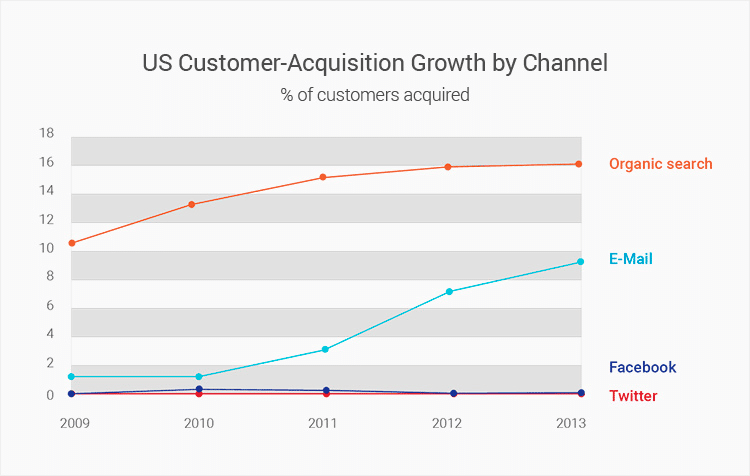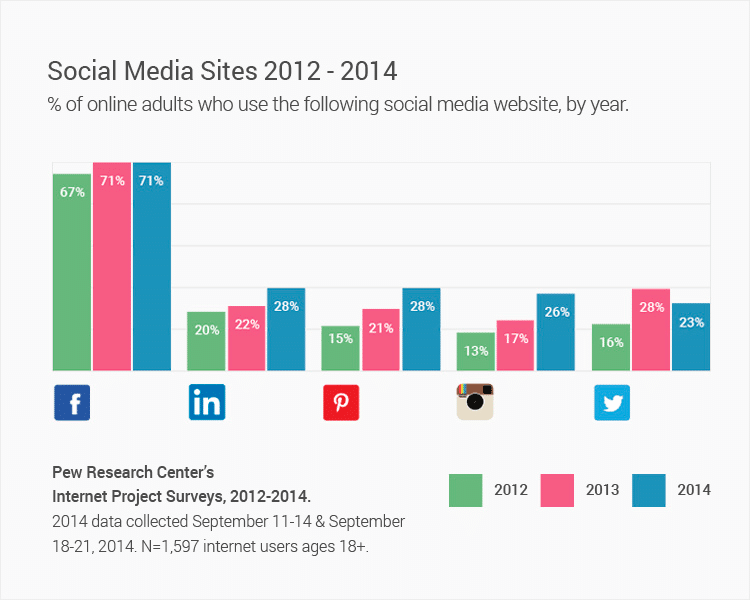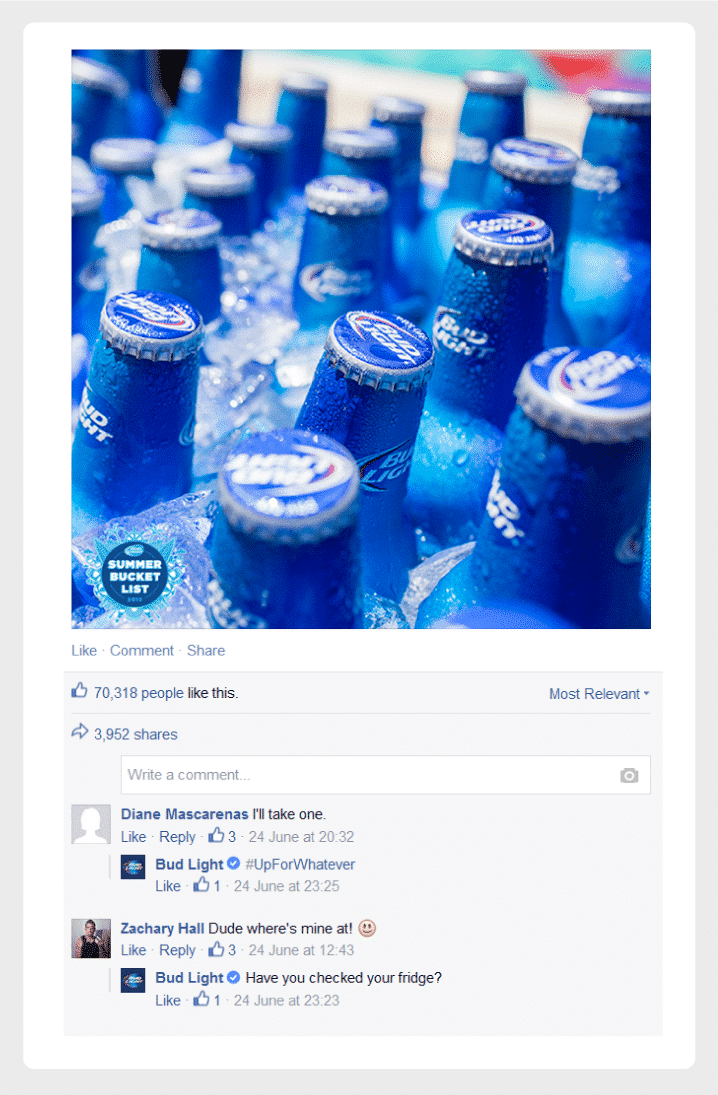With so many websites, social media updates, and online content hitting the Internet every day, businesses today have a pretty tough time keeping their customers engaged. As consumer attention spans become shorter and demands increase, how does a business build strong relationships and keep customer engagement strong?
In this article, we reveal the most effective ways businesses can revive their dying customer engagement.
Email marketing with segmentation
After organic search (SEO), email marketing is the second best channel to gain new customers:
 Source: Custora, E-Commerce Customer Acquisition Snapshot, 2013; McKinsey iConsumer survey, 2012.
Source: Custora, E-Commerce Customer Acquisition Snapshot, 2013; McKinsey iConsumer survey, 2012.
Many customers said they prefer to receive updates from businesses by email rather than social media. The great thing about email marketing is it can achieve so many things businesses don’t have to constantly send offers or promotional content to their customers. In fact, sending exclusively promotional emails would only further reduce engagement.
Weekly or monthly newsletters discussing business-related news, new product updates or linking to blog articles are great ways to keep customers engaged. Holiday and personalized birthday emails shouldn’t be overlooked either, as they can improve the bond between customer and business.
To really maximize customer engagement through email marketing, businesses should segment their list. Segmentation is the process of breaking up an email list into smaller categories.
For example, a property agency may have two types of customers: individual/personal and commercial businesses.
Sending the same email to both groups will result in reduced engagement, as individuals have no interest in commercial property and vice versa. Using tools such as MailChimp or AWeber, everything from open rates, click-throughs and list segmentation is possible allowing businesses to continually tweak their email campaigns to be more effective.
Running social media contests
The fastest way to build a following online and grab the attention of customers is through hosting social media competitions. There are 3 components to hosting social media contests that revive customer engagement:
- The prize must be of value and related to the business
- The contest must only be aimed only at customers
- Simple entry process
Let’s pretend Mercury Creative is hosting a social media contest for customers. To enter, customers must tag 5 friends in the comment section, take a picture next to an animal and like our Facebook Page. If they do this, they will win a $10 cash prize.
Who would enter? The prize has no relative value, it’s not targeting customers as the entry process allows anyone to enter, and the barrier of entry is way too high.
Here’s a Fossil competition where fans had to take a picture of them wearing a Fossil product for a chance to win a trip to their HQ in Dallas, and $1,000 worth of products:

Hosting contests that are restricted only for customers makes them feel valued and part of a VIP group, thereby increasing loyalty. Relevant prizes can be a product giveaway or a voucher coupon (something of value to customers), they don’t necessarily have to be $1,000 prizes like shown in the example above.
Leverage social media for customer insights
Over 71% of adults use Facebook in America, while more than 20% use either LinkedIn, Pinterest, Instagram or Twitter:
 Source: Pew Internet
Source: Pew Internet
Some businesses still regard Facebook and Twitter as play and not something that should be mixed in with business. This couldn’t be further from the truth. Most successful brands in America have very active social media profiles where they engage with their customers on a regular basis.
Bud Light has over 7.2 million followers and tries to respond to as many comments left by their fans:

It’s estimated that the average smartphone user checks Facebook 14 days a day, these are 14 potential opportunities for businesses to interact with their customers and build stronger connections. Social media is an awesome platform for businesses to get rid of their ties, unbutton their top collar and show they are human beings and not robots.
The power of a phone call
With all the emphasis on online marketing, it seems everyone has forgotten the power a simple phone call can bring. After a sale has been made, businesses should seriously consider calling their customers a week later asking if they are happy with their product or service.
This can be achieved by email, but a phone call adds greater value to the product or service offered, builds a stronger relationship and makes customers feel valued. The secret to increasing customer engagement using phone calls is to focus on the customer’s needs.
Going in with the attitude to secure a further sale or upsell other products may result in the customer feel more like a target than a valued individual. Aim to call all customers twice, once a week after the sale, and again further on down the line to remind them of your brand and to reignite engagement that may had been lost.
Summary
Customers who feel valued are more likely to buy again, and engaging with customers is not that difficult if businesses decide the methods listed above. The key to successful customer engagement is to use the 80/20 rule. 80% of all customer engagement methods should be provide the customer with a quality level of service and value, the other 20% can be self-promotional.
Failing to apply this rule will see a dramatic drop in engagement and customer lifetime value. Customers are conscious beings, they enjoy be treated well and cared for, it’s why some customers stay with brands forever and spend a lot of money.


